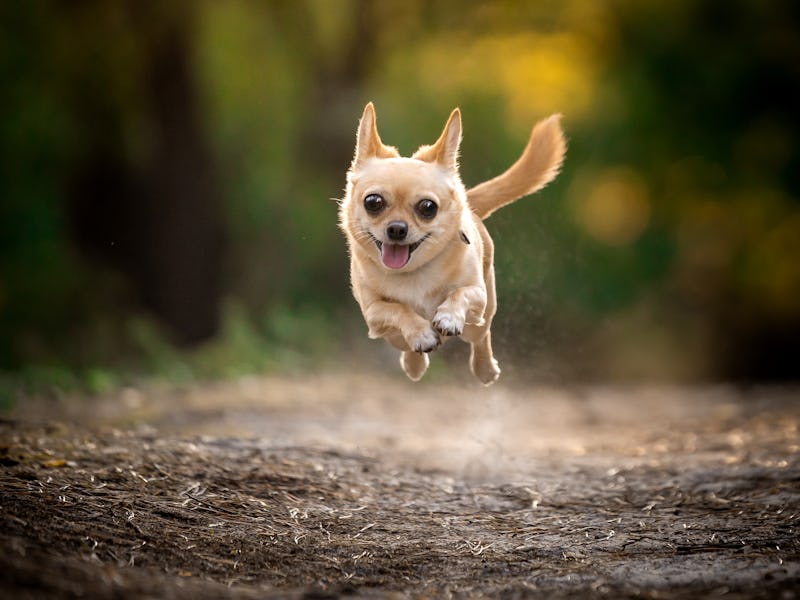A Pet Psychologist Reveals How To Give Your Dog The Best Walk of Its Life
Consider the importance of stopping to sniff often.

Walking your dog can be a simple daily joy for you and your pet. In reality, dog-walking, even under the best circumstances, isn’t always the delight it's thought to be. Even the most doting dog parents silently pray that our pooch will poop so we can turn around and get home.
But according to pet psychologists, that’s the wrong way to look at it. While you might spend nearly all your waking hours with your pet, a dog’s life is a far cry from yours. The key to a successful walk is to put yourself in your dog’s paws. Here’s how your dog actually prefers to walk.
Count flowers, not steps
According to James Serpell, professor emeritus of animal behavior and welfare at the University of Pennsylvania School of Veterinary Medicine, dogs require a minimum of two walks a day, at least 30 minutes each.
But those shouldn’t include a race to get the most steps in. Focusing on time spent outside rather than the distance traveled is key, Serpell says.
A walk is a mental exercise as much as it is a physical one. “For them, this type of adventure, this little walk around the block, this little trip to the park is really the high point of their day,” he says.
Unlike for humans, sniffing is how your dog interprets the world. That means a significant chunk of that time can be devoted to sniffing or peeing on things, both of which Serpell says are crucial to your dog’s experience. For example, when your dog stops to sniff a seemingly meaningless lamp post, what they are actually doing is discerning how many dogs have passed by it. And when they pee on it, they are marking their territory, which has been ingrained in dogs since long before they were labradoodles and Pomeranians.
Even elderly and disabled dogs who can’t walk still need precious outdoor time. Serpell recommends taking them out in padded strollers so they can still get a dose of good smells.
Never Rush the Walk — Or the Poop
Serpell says hurrying your dog along will only harm both of you in the long run. Without sufficient stimulation, dogs may become anxious or frustrated, expressing their feelings through undesirable behaviors like destroying furniture. “There’s plenty of evidence that lack of this type of exercise and enrichment increases the probability that the dog will develop some kind of a behavioral problem as a result,” Serpell says.
The same concept is true for rushing your dog to poop. This habit may even backfire psychologically. “I often wonder whether that doesn't subconsciously train the dog to hold off doing its business for as long as possible,” he says.
Customize your walk
Of course, these guidelines must be tailored to your dog. A golden retriever’s walk will look different from a chihuahua’s. Maybe your dog doesn’t even like walking, in which case the best option might be a romp in a backyard, dog park, or another enclosed area. As far as territory goes, Serpell says that while it’s ideal to vary walking routes, having a regular circuit isn’t bad. Your dog will integrate that neighborhood as familiar territory, and the smells will still be riveting.
Reframing what it means to walk your dog can improve the experience for everyone. Your dog can happily sniff unrestrained, and you can spend 30 minutes on social media or catching up on your favorite podcast. Everyone wins.
This article was originally published on